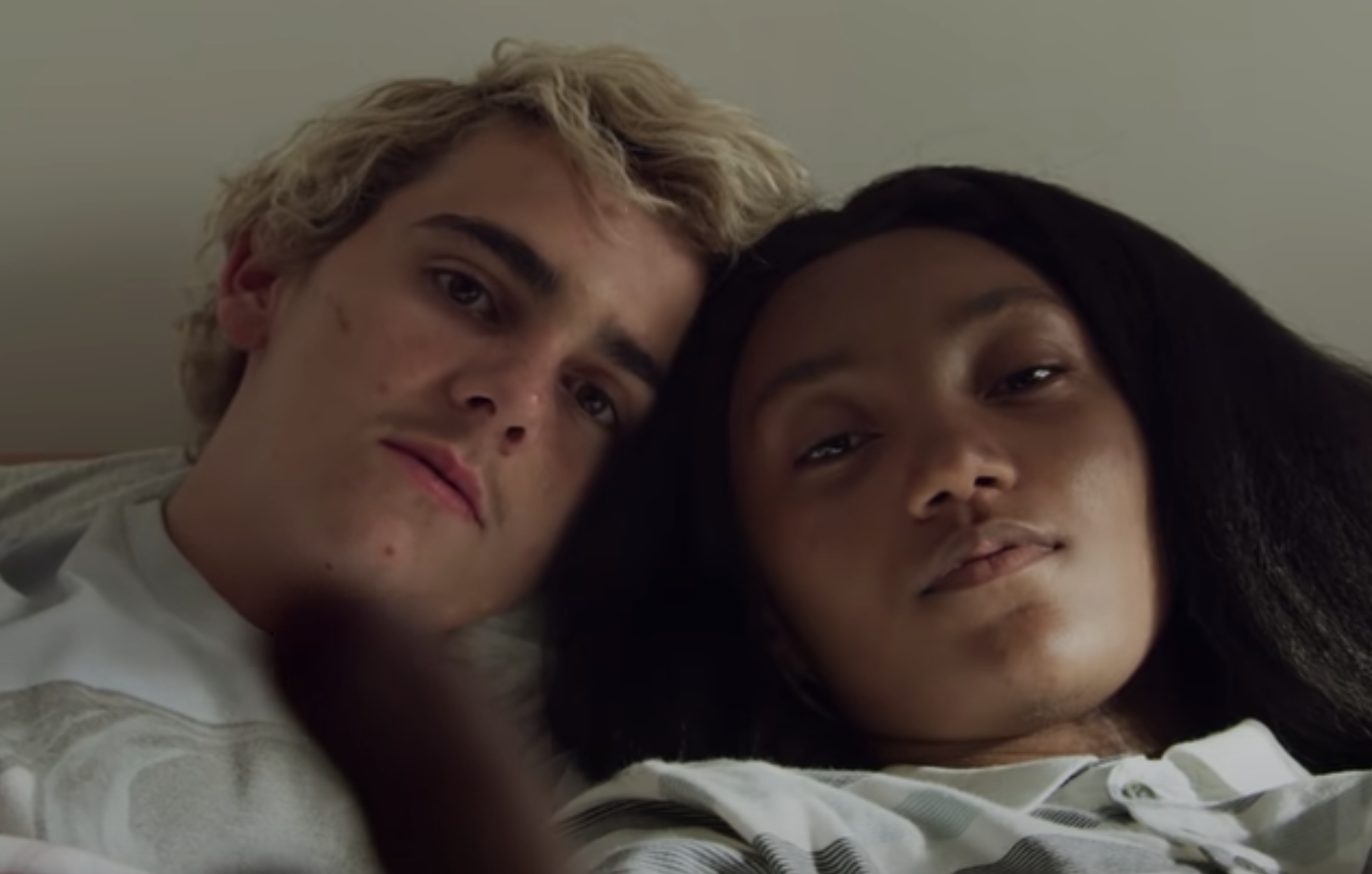I never got around to watching Luca Guadagnino‘s We Are Who We Are until yesterday, which is when the debut episode began streaming on HBO. So that’s all I’ve seen of this eight-episode series — installment #1. (It’s embedded after the jump.)
Set in 2016, it’s a dive into here-and-now teenage alienation — an awkward-adolescence, coming-of-age, trying-to-figure-it-out thing about a 14 year-old kid (Jack Dylan Grazer, who just turned 17 in real life) with the worst taste in clothing…I have to stop myself right here. I don’t want to make this piece about my own sartorial preferences past or present, but if I was 14 today I would rather stab myself with a steak knife than wear an unsubtle, over-sized T-shirt with the ugliest pair of baggy, leopard-skin shorts ever manufactured in human history. Not to mention a pair of unappealing red sneakers…okay, I’ll give that part of the ensemble a pass.
We Are Who We Are is set on a U.S. military base near Venice, Italy, and it concerns the initially agonizing struggle of Grazer’s character, Fraser Wilson, to acclimate after flying in from New York to live with his mom, an Army colonel named Sarah (Chloe Sevigny), and her wife, Maggie (Alice Braga), who also wears a uniform. Fraser is gay but not “out,” or so it appears. (There’s an eye-rolling moment when he happens to step into a barracks and catch sight of a few Army guys taking a shower, and he just stares.) All kinds of new relationships, assessments and misadventures await the poor guy, the most prominent being Jordan Kristine Seamon‘s Caitlin, a long-haired, African-American beauty who appears to be more or less straight but you never know.
I didn’t initially care all that much for Frazer or the general vibe, to be honest, but then it began to gradually pull me in. Guadagnino, whose A Bigger Splash and especially Call Me By Your Name established him as a maestro of sun-kissed Italian sensuality and a certain instinctual, improvisational, come-what-may attitude about life’s possibilities, really gets into Fraser’s impressions and moods and whatnot, and even though he’s another typically inarticulate kid who lives deep in his head and inside whatever tunes he happens to be listening to, there’s something about the nowness, aliveness, alone-ness and scattered whatever-ness in the atmosphere of this thing that turns a certain key.
We Are Who We Are is breathing fresh air, up to something else and, to me at least, offering a new kind of stimulant.
Fraser seems so dorky, so emotionally stunted and scowling. He’s 14 but behaves more like an angry eight year old with a taller, lankier frame. I guess I’ll eventually get used to him. Interesting eyes but so fucking clueless and closed off. Yes, of course — so was I at that age. The difference is that I kept most of my anxiety bottled up inside, at least in the presence of elders and to some extent with my peers. I half-confided in a couple of friends, I suppose, although I probably wasn’t articulate enough at the time to even share my truest thoughts with myself. But at least I didn’t commit any clothing crimes.
A filmmaker friend who knows the series top to bottom assures me that “you’ll end up loving Fraser — he’s an angel of vengeance against the current.”
I don’t know what else to say except that the first episode has convinced me to see the series through to the end.
Kyle Buchanan, the N.Y. Times‘ award-season columnist and inheritor of David Carr’s “carpetbagger” handle, has written an excellent piece about Guadagnino and the series.

